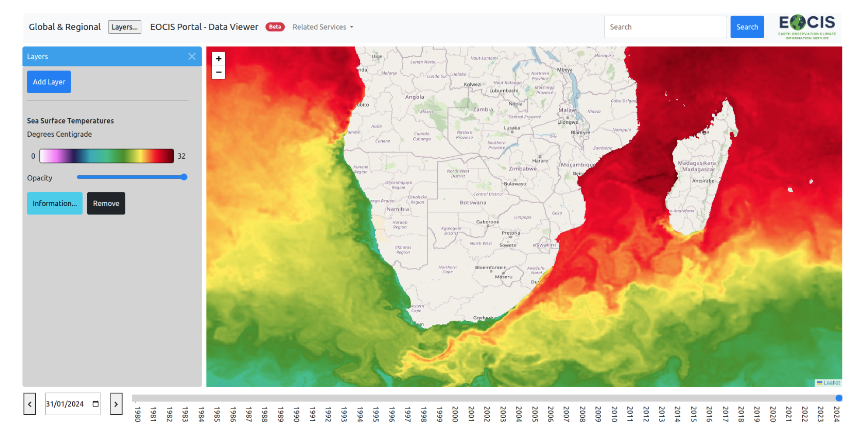Designing the EOCIS Data Portal
By Niall McCarroll…
One of the deliverables of the EOCIS project is to develop a data portal through which EOCIS datasets can be discovered and accessed. The data portal should be integrated into the EOCIS project website and together the website and data portal form an information resource for use by EOCIS consortium members, stakeholders, other interested parties and the general public. The data portal is also intended to complement another project, the Earth Observation Data Hub, which will also provide ways to explore and interact with EOCIS data.
With such a wide potential user base, it took some time to refine the website and the data portal designs. The website provides an overview of the project, pages for each data provider and updates in the form of news and blog posts (such as this post!). The data portal introduces several components, in prototype form at first, as the project progressed, with regular consultation with and feedback from consortium members:
- A data viewer, providing map-based visualisations of EOCIS datasets, including those developed as part of the Climate High Resolution UK (CHUK) projects.
- A climate dashboard providing apps which extract and presenting insights from the underlying datasets
- Resources which help users to access EOCIS data and perform their own analysis. An important objective of the data portal is to develop and publish metadata for the EOCIS datasets using the widely adopted Spatio-Temporal Access Catalog (STAC) standard.

Data Viewer – EOCIS Daily Sea Surface Temperatures around Southern Africa.
A guiding design principle for the data portal is to provide a simple interface that would be usable by a wide audience. Richer and more sophisticated interfaces would be provided by the Earth Observation Data Hub. The data portal is also designed to operate efficiently within the CEDA data center, pulling EOCIS data from the CEDA data archive only when needed.
As more datasets are published to the CEDA archive, visit the EOCIS data portal at https://eocis.org/portal to find out more about them!
